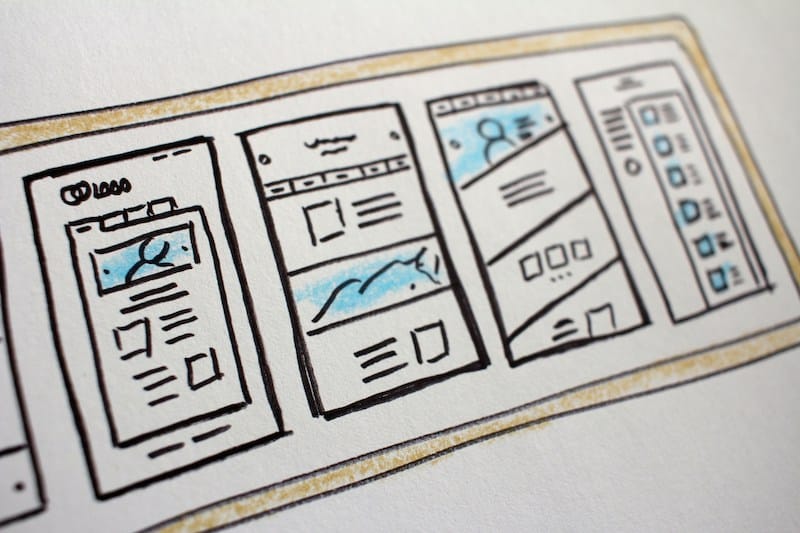How Often Should You Redesign or Update Your Website?
Additionally, websites are not an exception to the ever-changing nature of the digital realm. Your website serves as the online representation of your brand, regardless of whether you run a business, a personal blog, or an e-commerce platform based on the internet. On the other hand, how frequently should you rebuild or update your website in order to ensure that it remains successful, engaging, and relevant? Through the course of this essay, we will dissect the primary elements that determine the frequency with which you should update the appearance of your website. How Often Should You Redesign or Update Your Website?
Why Regular Website Updates Are Crucial
Your website is more than simply a collection of pages; it is a representation of your business and has an important part in user engagement, search engine optimization rankings, and conversions. It is necessary to maintain an up-to-date website for the following reasons:
1. SEO Rankings and Visibility
Websites that are routinely updated with new content and are optimized for the most recent trends are given priority by search engines such as Google. Websites that are already out of date and contain broken links or outdated material can have a negative impact on your results, which can result in you losing crucial traffic. https://diversewebsitedesign.com.au/counsellor-website-design/
2. User Experience (UX)
When users visit a website, they anticipate having experiences that are up to date, quick, and easy to understand. A design that is out of date or pages that load slowly can result in greater bounce rates and an overall decrease in engagement. Keeping your website up to date ensures that it continues to be user-friendly.
3. Security Risks
Websites that have not been updated in a long time are risky for security breaches and malware. It is important to perform regular upgrades to ensure that the software, plugins, and code on your website are all up to date with the most recent security protocols.
Signs It’s Time to Redesign Your Website
It is crucial to perform regular updates; nevertheless, if your website starts to exhibit significant indications of aging, it may be required to implement a comprehensive makeover. The following are some of the telltale signs that your website might actually benefit from a redesign:
1. It Looks Outdated
If your website has not undergone a design change in the past three to five years, it may appear obsolete in comparison to competitors that have designs that are more modern and slick. In the realm of web design, trends such as mobile-first interfaces and minimalist aesthetics have the potential to make older websites appear cumbersome or visually unpleasant than they actually are.
2. Poor Mobile Experience
Numerous consumers are accessing websites using their mobile devices at an increasing rate. In the event that your website does not support mobile devices or is not optimized for smaller displays, it is highly probable that you are losing a sizeable chunk of your traffic. Your ability to cater to these users and improve mobile performance can be improved by a redesign of your website.
3. Declining Conversion Rates
There is a possibility that your website is not doing as well as it used to if there is a sudden decrease in the number of leads, sales, or other critical performance metrics. Increasing conversions can be accomplished by redesigning the user flow, simplifying navigation, and performing improvements to call-to-action (CTA) buttons.
4. Slow Load Times
It is essential to maintain users’ interest through speed. The loading time of your website should not exceed three seconds; otherwise, you run the risk of losing potential visitors. As a result of a redesign that places an emphasis on performance optimization, loading times can be greatly reduced.
5. You’re Rebranding
In the event that your company goes through significant changes, such as a rebranding or a shift in the audience that you are trying to attract, your website needs to reflect these changes. By redesigning your website, you can guarantee that it is in line with the revised messaging and brand identity of your company.
How Often Should You Update Your Website?
In spite of the fact that a comprehensive redesign can be required once every few years, routine changes ought to take place far more frequently. Here is a rundown of the normal schedule for updated information:
1. Content Updates: Monthly or Quarterly
Incorporating new content into your website is one of the most straightforward ways to maintain its relevance. On a monthly or quarterly basis, it is recommended that blogs, news pieces, product updates, and case studies be updated when necessary. Not only does this add value to your users, but it also helps you retain your ranks in search engine results.

2. Design Tweaks: Every 1-2 Years
It is possible that a complete redesign is not required every year; but, making minor adjustments to the design of your website, such as upgrading the color scheme, fonts, or layout of the homepage, can help your website appear more modern. It is possible to make these tiny alterations once every one to two years, depending on the design trends and the feedback from users.
3. SEO Audits: Annually
By performing an SEO audit on your website on an annual basis, you can assure that it will continue to rank highly in search engine results. Because search engines are constantly evolving, doing an audit of your website’s content, meta descriptions, keywords, and general performance will assist you in remaining one step ahead of the competition.
4. Security and Software Updates: Continuously
In the event that new versions are made available, upgrades to the plugins and security should be implemented. This is of utmost significance for websites that are powered by systems such as WordPress, which are highly dependent on plugins developed by third-party developers. Maintaining a regular update schedule for your software helps to safeguard your website from potential security flaws.
The Cost of Redesigning or Updating a Website
When it comes to website owners, one of the most important issues is the expense of redesigns and frequent upgrades. Generally speaking, the expense is broken down as follows:
1. Redesign Costs
Depending on the website’s complexity, size, and the features that are required, the cost of a complete redesign of a website can be anywhere from $5,000 to $50,000 or even more. The investment that is required for larger organizations or e-commerce platforms is likely to be significantly higher than that which is required for smaller, static websites.
2. Ongoing Maintenance and Updates
A monthly retainer, which can vary anywhere from $200 to $2,000 depending on the services that are necessary, is typically used to cover monthly upgrades such as the generation of content, audits of search engine optimization, and security checks.
Balancing Redesign Frequency with Business Needs
At the end of the day, the frequency of redesigns and updates has to be in accordance with the objectives of your organization and the expectations of your users. A few things to take into consideration when determining how frequently you should update your website are as follows:
1. Your Industry
It is essential to make more regular updates in order to stay current with trends if you work in a fast-paced area such as the fashion or technology industries. It’s possible that companies operating in slower industries, like legal services, don’t need to rebuild their websites as frequently, but they should still make regular upgrades a priority.
2. Audience Preferences
The behavior of users might provide you with useful information about the moment when a redesign is required. In order to gain an understanding of how effectively your website is resonating with your target audience, it is important to pay attention to metrics such as bounce rates, the amount of time spent on pages, and conversion rates.
3. Budget Constraints
Even if regular changes are necessary, revamping a website is a substantial expenditure that should be considered. For the purpose of determining the optimal timetable for website refreshes, you should take into account your budget, the requirements of your company, and the user experience.
Conclusion
When it comes to communicating with your audience, generating leads, and driving conversions, your website is an essential source of information. In spite of the fact that there is no universally applicable answer to the question of how frequently you should redesign or update your website, a general rule of thumb is to update the content on a regular basis, perform annual SEO and security audits, and think about redesigning the website completely every three to five years. Through maintaining a proactive stance, you can guarantee that your website will continue to be effective and will continue to provide value to your users.





